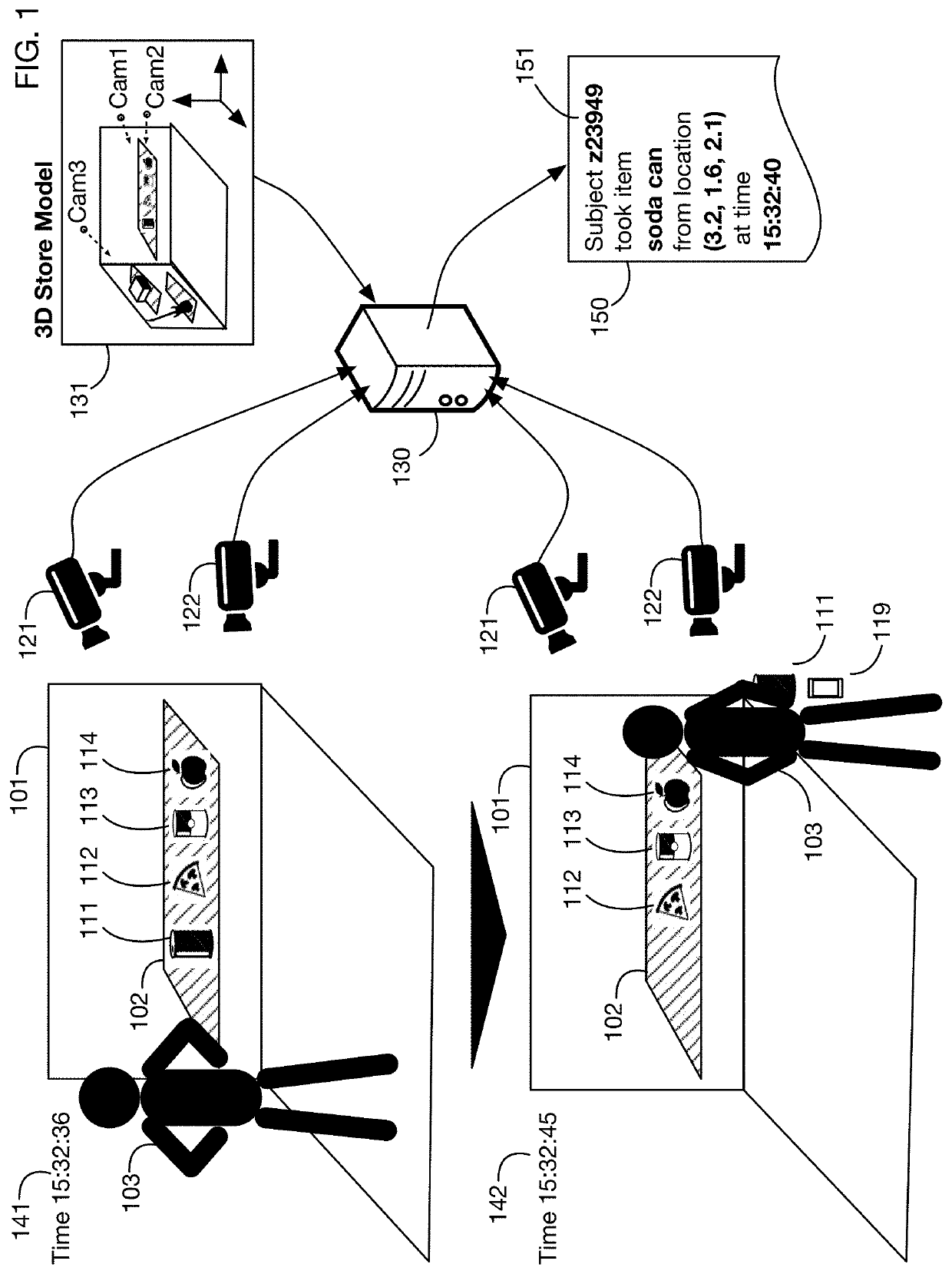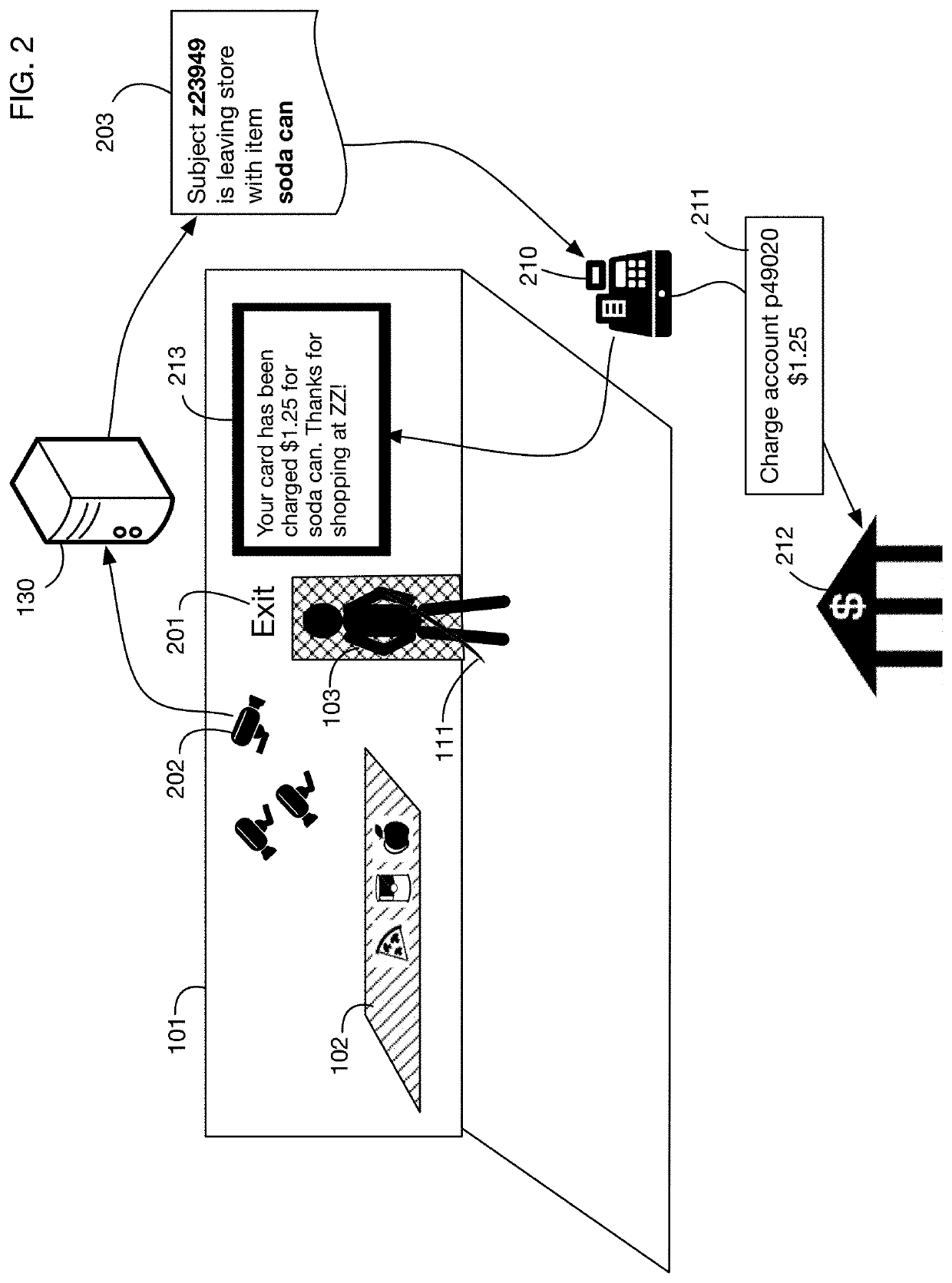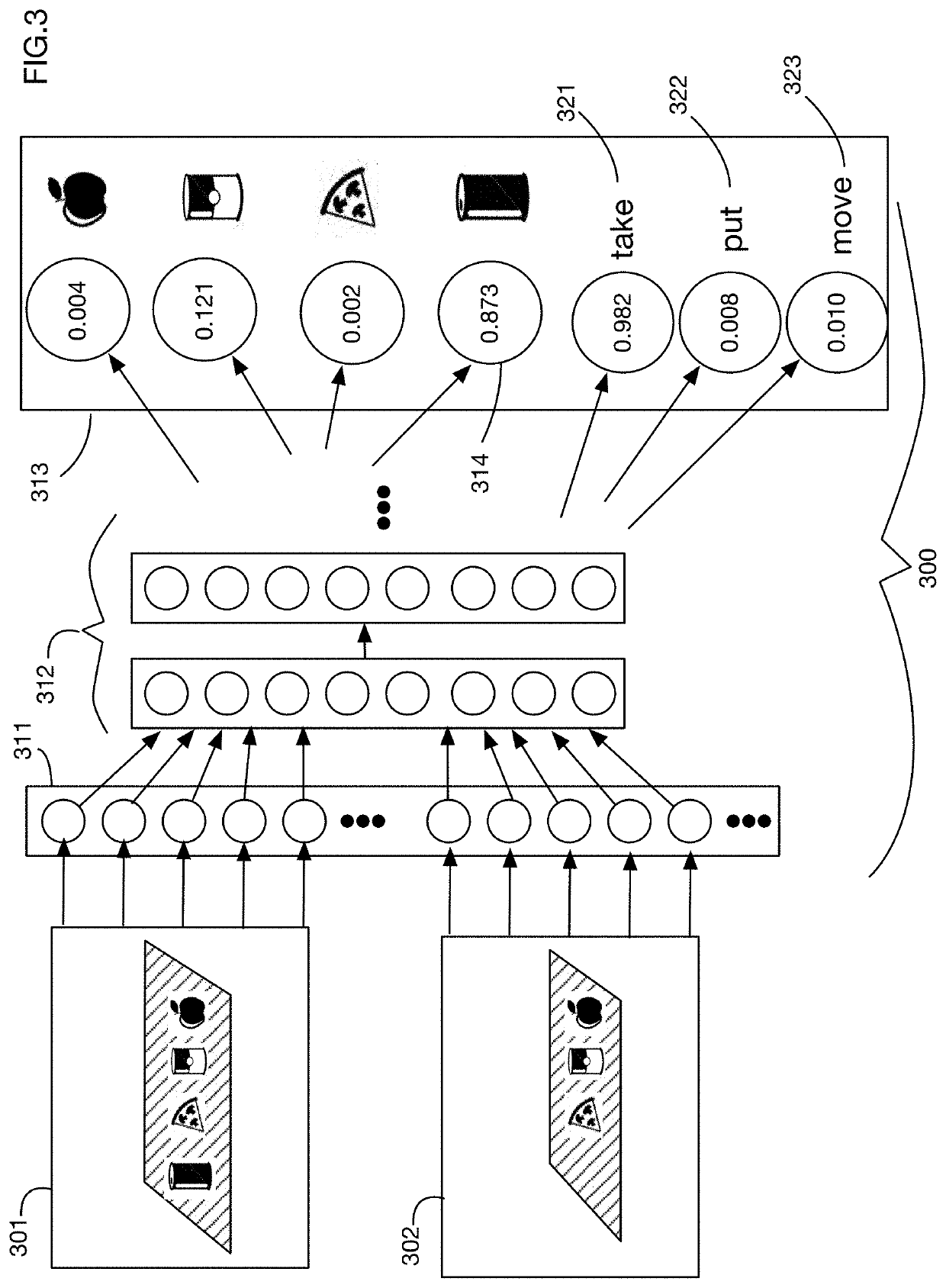Sensor bar shelf monitor
- Summary
- Abstract
- Description
- Claims
- Application Information
AI Technical Summary
Benefits of technology
Problems solved by technology
Method used
Image
Examples
Embodiment Construction
[0135]A sensor bar shelf monitor for example that may be mounted at the front of a shelf that monitors the shelf below will now be described. Embodiments may track a person by analyzing camera images and may therefore extend an authorization obtained by this person at one point in time and space to a different point in time or space. Embodiments may also enable an autonomous store system that analyzes camera images to track people and their interactions with items and may also enable camera calibration, optimal camera placement and computer interaction with a point of sale system. The computer interaction may involve a mobile device and a point of sale system for example. In the following exemplary description, numerous specific details are set forth in order to provide a more thorough understanding of embodiments of the invention. It will be apparent, however, to an artisan of ordinary skill that the present invention may be practiced without incorporating all aspects of the specif...
PUM
 Login to view more
Login to view more Abstract
Description
Claims
Application Information
 Login to view more
Login to view more - R&D Engineer
- R&D Manager
- IP Professional
- Industry Leading Data Capabilities
- Powerful AI technology
- Patent DNA Extraction
Browse by: Latest US Patents, China's latest patents, Technical Efficacy Thesaurus, Application Domain, Technology Topic.
© 2024 PatSnap. All rights reserved.Legal|Privacy policy|Modern Slavery Act Transparency Statement|Sitemap



